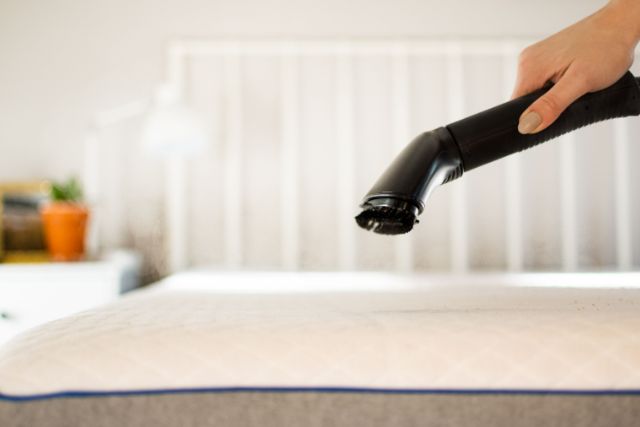A clean mattress is essential for a good night's sleep and overall health.
We will explore why it is important to clean your mattress regularly, the health risks associated with a dirty mattress, and how often you should clean it.
We will also provide a step-by-step guide on how to clean a dirty mattress, including tips for maintaining its cleanliness.
We will discuss when it may be time to replace your mattress if it is beyond cleaning.
Let's get started on the journey to a cleaner, healthier sleeping environment!
Dig deeper: How To Choose A Bed Frame
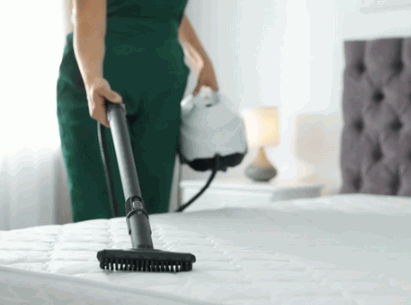
Why Is It Important To Clean A Mattress?
Maintaining a clean mattress is crucial for not only extending its lifespan but also ensuring a hygienic sleeping environment. Regular cleaning helps eliminate dust, odours, and stains, promoting better sleep quality and overall well-being. By using appropriate cleaning products such as mattress cleaners and essential oils, you can freshen up the mattress surface and enhance its durability, especially important for memory foam mattresses. Upholding cleanliness in your bedding is essential for a good night's sleep and overall health, making mattress hygiene a top priority.
A clean mattress contributes to a healthier indoor environment by reducing allergens that can trigger respiratory issues. The use of environmentally friendly cleaning agents ensures a safe and chemical-free sleeping space for you and your family. Incorporating essential oils like lavender or tea tree oil not only offers a pleasant scent but also possesses antibacterial properties that help combat germs and microbes on the mattress surface. Regular vacuuming and airing out your mattress can prevent the buildup of dust mites and mould, further enhancing its longevity. Remember, a well-maintained mattress not only supports quality sleep but also safeguards your health in the long run.
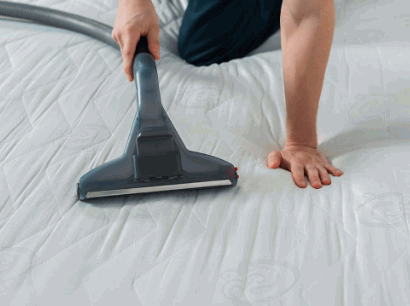
What Are The Health Risks Of A Dirty Mattress?
A dirty mattress poses various health risks due to the accumulation of dust, bacteria, and allergens over time. Stains on the mattress fabric can harbour harmful microbes and contribute to respiratory problems, skin irritations, and allergic reactions. The presence of dust mites in an unclean mattress can exacerbate asthma and other respiratory conditions. Regular cleaning and maintenance are essential to mitigate these health risks and create a healthier sleeping environment for improved well-being.
When you sleep on a dirty mattress, you are exposing yourself to a breeding ground of bacteria and allergens that can trigger a range of health issues. These microscopic invaders can aggravate existing respiratory conditions, such as asthma, and lead to coughing, sneezing, and breathing difficulties. Dust mites, in particular, thrive in unwashed bedding and can worsen allergies, causing itchiness, eczema flare-ups, and even sinus congestion.
How Often Should You Clean Your Mattress?
It is recommended to clean your mattress regularly to prevent the buildup of stains, dust, and allergens that can affect your sleep quality and health. Ideally, you should clean your mattress every six months to maintain its freshness and hygiene.
Along with cleaning the mattress surface, it's crucial to pay attention to washing your bedding items such as sheets, pillows, and mattress toppers regularly. These pieces come into direct contact with your skin and can harbour dirt, sweat, and allergens.
Keeping these components clean not only contributes to a hygienic sleep environment but also prolongs the lifespan of your mattress by reducing the transfer of grime and oils.
To ensure consistent cleanliness, establishing a schedule for washing and rotating your bedding can be beneficial. Maintaining a clean sleep space promotes better rest, minimises allergy triggers, and enhances overall well-being.
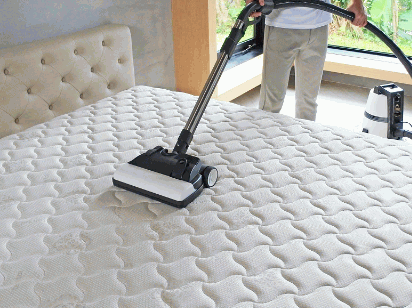
What Are The Supplies Needed To Clean A Mattress?
To effectively clean a mattress and remove stains or odours, you will need specific supplies such as a vacuum cleaner, essential oils, and suitable cleaning products. A vacuum cleaner helps eliminate dust and debris from the mattress surface and seams. Essential oils can be used to freshen up the mattress and provide a pleasant scent. Having specialised cleaning products like mattress cleaners or upholstery cleaners can aid in tackling tough stains and maintaining the mattress's cleanliness.
When choosing a vacuum cleaner for mattress cleaning, opt for one with strong suction power and a detachable upholstery tool to reach corners and crevices effectively.
- Essential oils such as lavender, tea tree, or eucalyptus can not only freshen the mattress but also possess natural antibacterial properties, helping to eliminate germs. Including a few drops of these oils in a homemade mattress spray can enhance overall cleanliness and hygiene.
- Selecting the right cleaning products is crucial. Look for gentle yet effective solutions specifically formulated for mattresses, ensuring they can tackle stains without damaging the fabric. Neutralising odours and providing a deep clean are essential functions to consider when choosing a cleaning product.
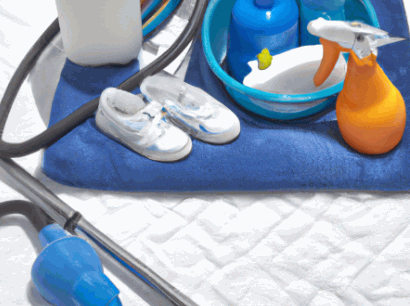
Step-by-Step Guide To Cleaning A Dirty Mattress
Cleaning a dirty mattress requires a systematic approach to ensure thorough cleaning and maintenance. Follow this step-by-step guide to effectively clean your mattress:
- First, strip all bedding, including sheets, pillowcases, and mattress protectors, and wash them in warm water with gentle detergent.
- Next, thoroughly vacuum the mattress surface using the upholstery attachment to remove dust, dirt, and allergens. Pay extra attention to seams and crevices where debris may accumulate.
- For stubborn stains, create a gentle cleaning solution by mixing distilled white vinegar and water in equal parts. Dab the solution on the stain using a clean cloth, then blot with a damp cloth to remove the solution.
- To deodorise the mattress, sprinkle bicarbonate of soda over the entire surface and let it sit for several hours to absorb odours. Vacuum up the bicarbonate of soda thoroughly.
- Remember to flip and rotate your mattress regularly to promote even wear and extend its lifespan. Wipe down the bed frame and headboard with a damp cloth to keep them free of dust and dirt.
By following these steps, you can eliminate stains, dust, and odours, and maintain a fresh and hygienic sleeping surface.
Step 1: Strip The Bed
- The first step in cleaning a mattress is to strip the bed of all bedding items, including sheets, pillows, and the mattress protector. This process ensures that you have a clean surface to work on and allows for thorough cleaning of the mattress.
Once you have removed the bedding items, you can focus on preparing them for washing. Washing the sheets and pillowcases with hot water and a mild detergent not only keeps them fresh but also eliminates any dust mites or allergens. Remember to check the care labels for specific washing instructions to maintain the quality of the fabrics.
As for the mattress protector, it is crucial to wash it regularly to prevent the build-up of dirt and moisture. Most protectors are machine washable, so simply follow the manufacturer's instructions for the best cleaning results. By keeping these bedding items clean, you ensure a healthier sleep environment and extend the lifespan of your mattress.
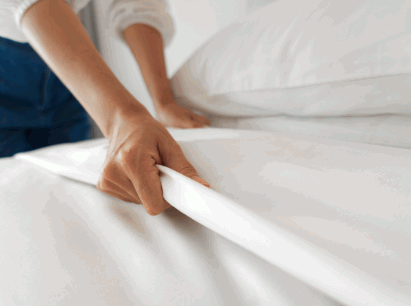
Step 2: Vacuum The Mattress
Using a vacuum cleaner, start by thoroughly vacuuming the mattress surface to remove dust, debris, and any loose particles. Pay special attention to seams and crevices where dust and dirt tend to accumulate, ensuring a comprehensive cleaning process.
Make sure to use the appropriate attachment tools for your vacuum cleaner, such as a crevice tool or upholstery brush, to effectively reach all the nooks and crannies of the mattress. Remember to vacuum both sides of the mattress to eliminate any hidden allergens or dust mites. Regular vacuuming can help prolong the lifespan of your mattress and contribute to a healthier sleeping environment. After vacuuming, consider using a mattress protector to safeguard against future spills and stains, further maintaining its cleanliness and hygiene.
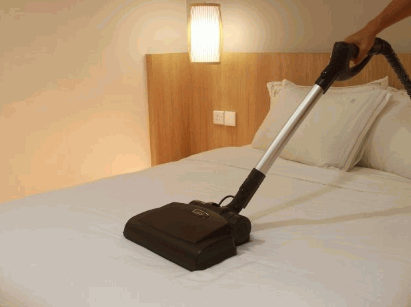
Step 3: Spot Clean Stains
For stubborn stains on the mattress fabric, it is essential to spot clean using appropriate cleaning solutions. Treat stains like blood, urine, or vomit with a mixture of hydrogen peroxide, warm water, and dish liquid to effectively remove them without damaging the mattress fabric.
Spot-cleaning stains on a mattress play a crucial role in maintaining its cleanliness and appearance. It not only helps in extending the lifespan of the mattress but also ensures a healthier sleeping environment. By addressing stains promptly, you can prevent them from settling deeply into the fabric, making them easier to remove.
When dealing with common stains such as blood, urine, or vomit, using a solution of hydrogen peroxide, warm water, and dish liquid proves to be highly effective. This mixture aids in breaking down the stains and lifting them off the mattress fabric without causing any harm.
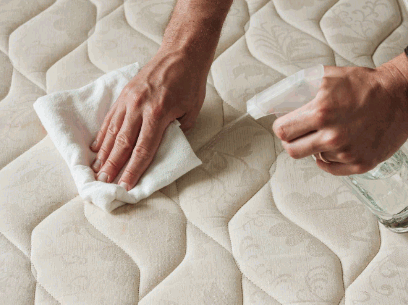
Step 4: Deodorise The Mattress
To eliminate odours and keep your mattress fresh, deodorise it using natural remedies like essential oils or bicarbonate of soda. Sprinkle bicarbonate of soda over the mattress surface and let it sit for some time to absorb odours, then vacuum it off. Alternatively, you can use essential oils diluted in water as a spray to add a pleasant scent to the mattress.
Deodorising your mattress is crucial not only for maintaining a fresh sleeping environment but also for overall hygiene and comfort. When odours accumulate on your mattress over time, it can impact your quality of sleep and health.
Using natural deodorising agents like bicarbonate of soda or essential oils is an effective and safe way to neutralise smells without the use of harsh chemicals. Bicarbonate of soda, in particular, has excellent absorbent properties that help in capturing and eliminating odours from the mattress fabric.
One important tip is to ensure that the bicarbonate of soda is spread evenly over the entire surface of the mattress, focusing on areas that tend to trap more odours, such as the corners and edges. Let the bicarbonate of soda sit for at least a few hours, preferably overnight, to allow it enough time to absorb the unwanted smells effectively. After the waiting period, using a vacuum cleaner with an upholstery attachment, gently vacuum the bicarbonate of soda off the mattress.
For those who prefer a fragrant touch, essential oils offer a natural and aromatherapeutic solution to deodorise the mattress. To create an essential oil spray, simply dilute a few drops of your preferred oil, such as lavender or eucalyptus, in water and transfer it to a spray bottle. Lightly mist the mattress surface with the essential oil spray for a refreshing and calming scent. Remember to shake the spray bottle before each use to ensure proper distribution of the oil and water mixture.
Regularly deodorising your mattress with these natural remedies not only freshens up your sleeping space but also helps in maintaining a healthy and pleasant environment for a restful night's sleep.
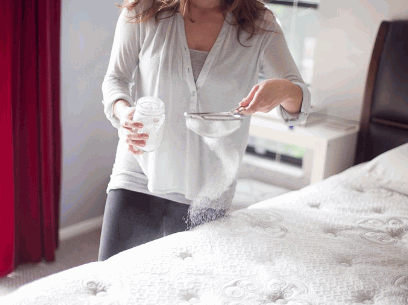
Step 5: Flip And Rotate The Mattress
For even wear and longevity, it's advisable to flip and rotate your mattress regularly. This practice helps distribute the weight evenly across the mattress surface, preventing sagging and ensuring a more comfortable and supportive sleep experience.
By flipping and rotating your mattress, you can also reduce the risk of developing uncomfortable body impressions caused by sleeping in the same spot every night. This maintenance routine aids in ventilating the mattress, allowing moisture to evaporate and preventing the build-up of mould and mildew.
Experts typically recommend flipping and rotating your mattress every three to six months, but this frequency may vary depending on the mattress type and usage. Be sure to check the manufacturer's guidelines for specific recommendations tailored to your mattress model.
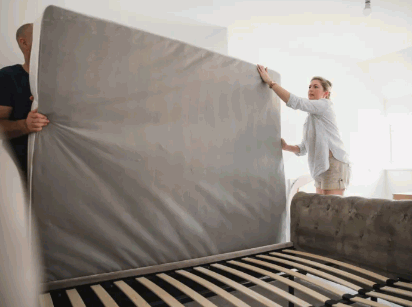
Step 6: Clean The Bed Frame And Headboard
Don't forget to clean the bed frame and headboard along with the mattress to maintain overall cleanliness and hygiene in your sleeping area. Use a suitable cleaner to wipe down the surfaces, removing dust, dirt, and any buildup that may affect the sleeping environment.
When considering mattress maintenance, giving attention to the bed frame and headboard is crucial for creating a truly hygienic sleep sanctuary. Regular cleaning of these surfaces not only eliminates visible dirt and dust but also helps prevent allergens and bacteria from accumulating.
Choose cleaning products specifically designed for the materials of your bed frame and headboard to ensure effective yet gentle cleansing. Whether wood, metal, fabric, or upholstery, each surface requires a tailored cleaning approach for optimal results.
By recognising the importance of cleaning the entire sleep setup, you are not only enhancing the aesthetics of your bedroom but also addressing a key factor influencing your sleep quality. A clean bed frame and headboard contribute to a holistic approach to mattress care, promoting a healthier and more restful sleep environment.

Tips For Maintaining A Clean Mattress
To ensure your mattress stays clean and fresh for longer, consider these maintenance tips:
- Regularly vacuum the mattress surface and seams
- Spot clean stains promptly using gentle solutions
- Deodorise with bicarbonate of soda or essential oils
- Wash bedding items in hot water
- Rotate the mattress every few months for even wear
By following these tips, you can extend the lifespan of your mattress and enjoy a clean sleeping environment.
Proper maintenance of your mattress is essential not only for cleanliness but also for your overall health. Along with regular vacuuming, make it a habit to air out your mattress by opening windows occasionally to prevent moisture buildup. Another effective technique is using a mattress protector to safeguard against spills and dust mites. Remember to follow the manufacturer's cleaning instructions and avoid excessive moisture to prevent mould growth. Consider investing in a mattress topper for added protection and comfort.
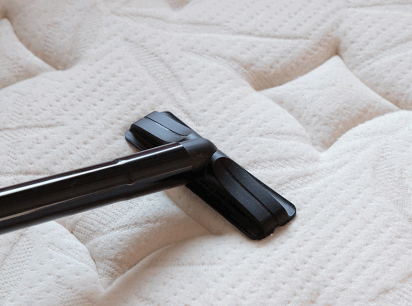
What To Do If Your Mattress Is Beyond Cleaning?
If your mattress is beyond cleaning due to irreversible damage or wear, it may be time to consider replacing it. Evaluate the condition of your mattress, including visible signs of wear, sagging, or discomfort, to determine if it is no longer suitable for use. Check the manufacturer's warranty and lifespan guidelines to see if a replacement is warranted for your current mattress.
When assessing whether it's time to replace your mattress, consider factors such as noticeable indentations, lumps, or springs poking through the fabric, indicating structural integrity issues.
If you find yourself waking up with aches and pains that persist throughout the day, indicating discomfort caused by the mattress, it may be time for a change.
Keep in mind that most mattresses have a lifespan of around 7-10 years, so if yours has served you well for that duration, it might be reaching the end of its optimal performance.
When To Replace Your Mattress
Knowing when to replace your mattress is essential for maintaining sleep quality and overall comfort.
Look out for signs of wear, sagging, discomfort, or visible damage that indicate the need for a new mattress.
Check the manufacturer's guarantee and lifespan recommendations to determine if your current mattress is due for a replacement.
When your once plush mattress starts feeling lumpy or uneven, it's a clear indication that it's time for a change.
Feeling springs poking through or a lack of firmness where there used to be support are telltale signs that your mattress may no longer be providing the comfort and alignment your body needs.
Regularly assessing the condition of your mattress and paying attention to how your body feels after waking up can help you catch these signs early, ensuring you address the need for a replacement before discomfort interferes with your sleep quality.

